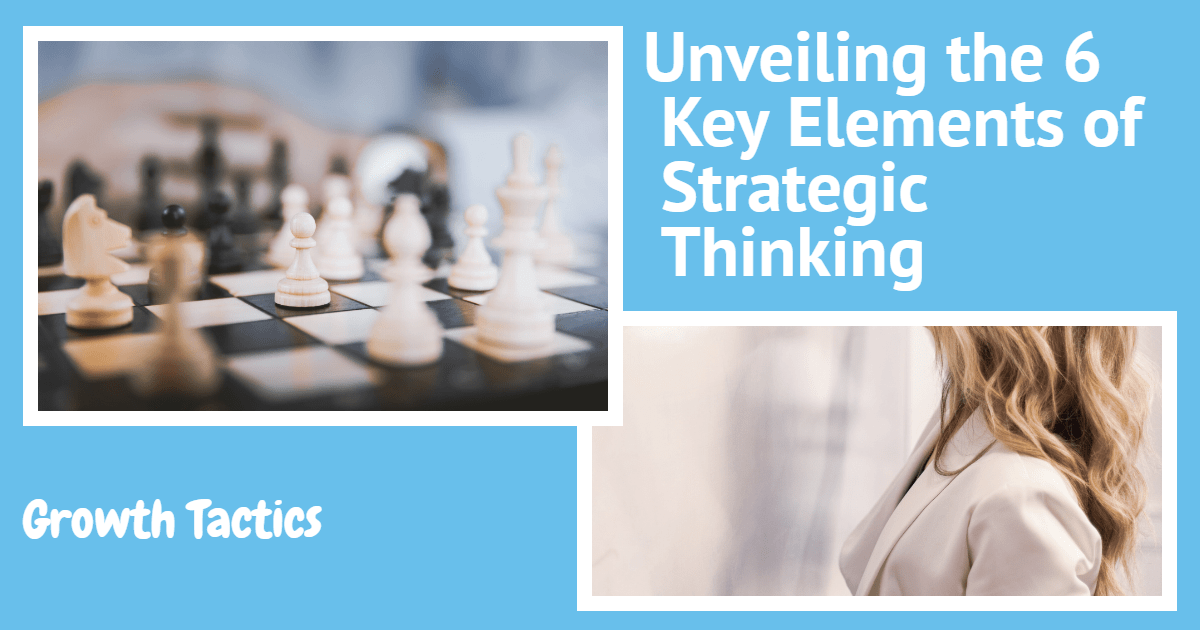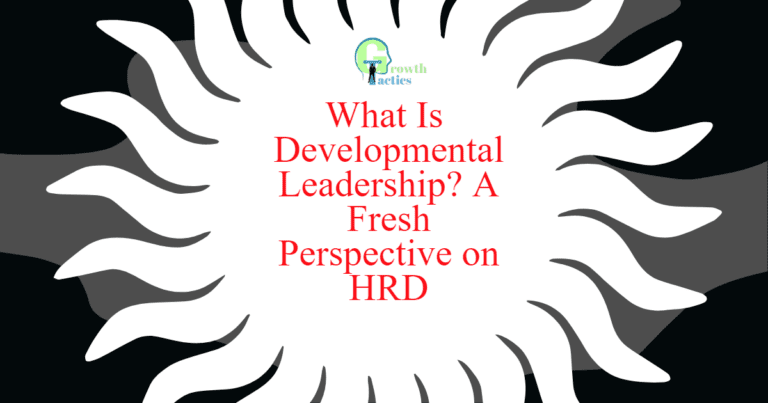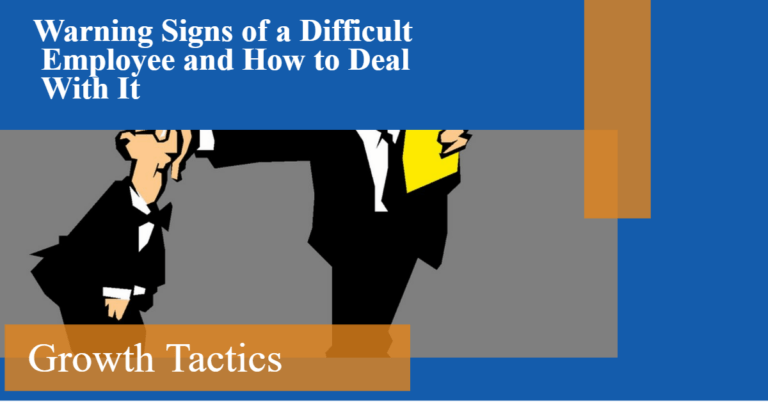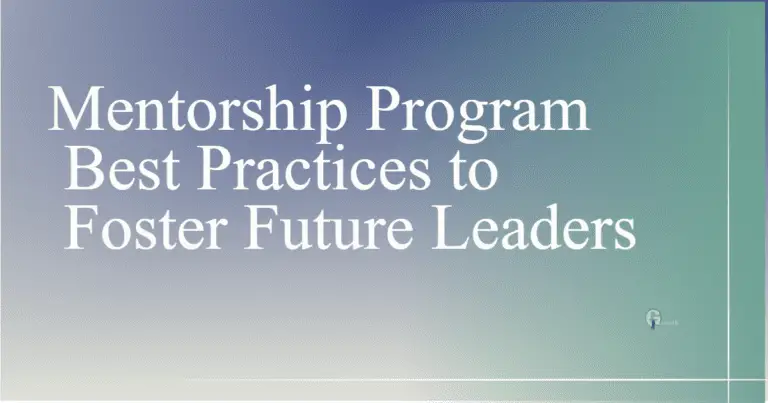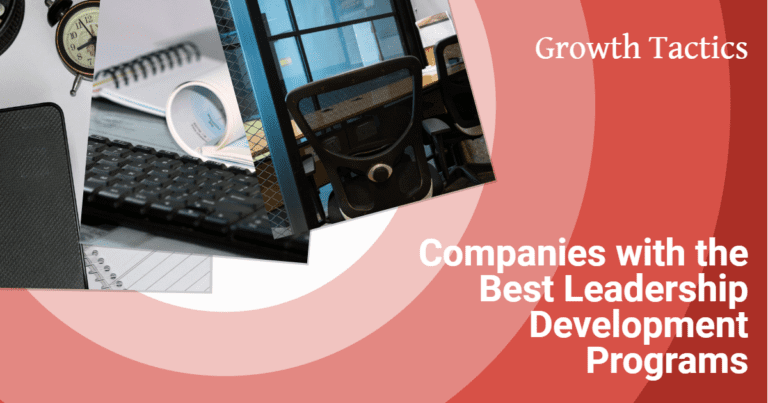Strategic thinking is a way of approaching business challenges and opportunities with a big-picture, long-term perspective. It involves examining the wider context and dynamics that impact an organization and using systems thinking to consider the interconnections between different parts. Strategic thinking differs from strategic planning in that it is more about developing a strategic mindset rather than creating a fixed plan.
Strategic thinking requires adopting a mindset that is curious, creative, and reflective. It involves asking questions to deeply understand context and identify key issues or problems. Strategic thinkers take a holistic perspective, recognizing that everything is connected in an ecosystem. They are able to zoom out to see the big picture while also zooming in on details when needed. The goal of strategic thinking is to gain fresh insights and new perspectives that can inform strategic decisions.
Unlike tactical day-to-day thinking which is focused on immediate actions and results, strategic thinking considers the broader implications over time. It is about understanding the different forces shaping the future, and playing an active role in creating that future rather than passively reacting to events. Strategic thinkers aim to open up new possibilities and opportunities. They have a vision but also remain flexible and adaptive as conditions change. Overall, strategic thinking provides the foundation for smart strategy development and effective leadership.
Jump To Section
Why is Strategic Thinking Important?
Strategic thinking is critical for organizations and leaders to thrive in today’s complex and rapidly changing business environment. It provides several key benefits that lead to competitive advantage:
-
Fosters innovation and creativity: Strategic thinking involves looking at problems and opportunities from new perspectives. This sparks innovative solutions and helps organizations continually reinvent themselves.
-
Drives smart risk-taking: By taking a systems view, strategic thinkers can identify intelligent risks worth taking that provide upside potential. This leads to bold moves that pay off.
-
Enables agility and adaptability: In a volatile world, strategic thinking allows leaders to rapidly adapt by spotting changes early and making smart decisions. Instead of reacting, strategic thinkers shape the future.
-
Uncovers new opportunities: Thinking strategically reveals insights that others miss. It allows you to see over the horizon and capitalize on emerging trends.
-
Promotes proactive leadership: Strategic leaders shape the playing field to their advantage rather than passively observing. They drive change instead of responding to it.
In today’s disruptive environment, strategic thinking is an essential leadership capability. It empowers organizations to get ahead of change and win in the marketplace. Leaders who think and act strategically will always have a competitive edge.
Element #1: Systems Perspective
Strategic thinking requires taking a big picture view and understanding how all the parts and players interact as a system. It involves avoiding siloed thinking and recognizing the complex dynamics and interdependencies between various components. Strategic thinkers adopt a holistic perspective, seeing both the forest and the trees. They analyze how changes in one area reverberate throughout the whole system.
This emphasis on systems thinking enables strategic leaders to identify root causes, not just symptoms. It pushes them to ask “why” questions and trace problems back to their sources. A systems perspective also reveals hidden relationships, opportunities and constraints that narrowly focused thinkers would overlook. Strategic thinkers consider secondary and tertiary effects, not just primary impacts. This equips them to make decisions and craft solutions that produce lasting improvements across the whole system.
Adopting a systems perspective is crucial because organizations and markets function as ecosystems, with many moving parts and complex interconnections. Strategic thinkers take the time to map out key relationships, information flows and decision chains. This equips them to pinpoint leverage points where a small shift can create big ripple effects. A systems focus allows leaders to avoid “quick fixes” that solve one issue but trigger others down the line. It enables them to anticipate obstacles and preemptively address them. By leveraging systems dynamics, strategic thinkers catalyze lasting, holistic improvements.
Element #2: Intent Focused
Strategic thinking requires having a clear vision and goals to provide direction. Strategic thinkers remain focused on the end in mind, anchoring their decisions and actions to their overarching intent.
Without a clear vision, efforts can easily become scattered and diluted. Strategic leaders maintain focus by constantly referencing the vision and goals. This provides an anchor point to evaluate opportunities and make choices aligned with the desired outcomes.
Strategic thinking involves setting an ambitious vision for the future, whether leading an organization, brand, or your own career. This vision reflects the change you want to create in the world. With a bold vision clarified, you can then work backwards to identify the strategic priorities and plans to make that vision a reality.
Having an inspiring vision for the future is crucial, but strategic thinkers also set measurable goals to track progress. Setting S.M.A.R.T. goals helps maintain accountability. With clear goals in place, strategic thinkers can regularly evaluate what’s working, what’s not, and make informed decisions to stay on track towards the vision.
Focusing limited resources on a distinct opportunity you have identified based on a potential breakthrough is key. Strategic thinkers don’t get distracted trying to pursue too many disparate opportunities and spread themselves too thin. They make choices to concentrate resources where they can have the most impact based on their strategic vision and goals.
Element #3: Intelligent Opportunism
Strategic thinking requires intelligent opportunism – the ability to balance planning with flexibility and adaptability. Strategic thinkers need to be able to seize opportunities at the right moment. This involves focusing your limited resources on a distinct opportunity you have identified based on a potential change or breakthrough win. It’s about using speed strategically to seize the opportunity before others can take action.
Intelligent opportunism turns an early breakthrough win into a shift in momentum and positional power. It tightens the bond with consumers by making strategic partnerships in programs that move consumers along their purchase journey. Slow down and organize before you make your next move but use moments of accelerated needs to make choices and close the deal.
Intelligent opportunism involves making informed decisions to achieve breakthroughs. It creates a future pathway that works on the brand idea and vision. A smart strategic thinker uses intelligent opportunism to deliver product extensions, inspirational moments for employees, and motivating experiences for consumers that bring the brand idea to life.
Element #4: Thinking in Time
Strategic thinking requires considering the past, present, and future when making decisions. Strategic thinkers reflect on past successes and failures to gain valuable insights, update their choices, and avoid repeating mistakes. At the same time, they focus on the present, making informed decisions to achieve goals based on current circumstances. Strategic thinkers also look to the future, envisioning potential changes and opportunities to prepare for what’s ahead.
Thinking in time creates a flywheel effect, with the vision anchoring the strategy you keep investing behind to drive momentum. Strategic leaders use the past to frame the present and shape the future. By learning from prior experience, strategic thinkers can anticipate challenges, ask interruptive questions that frame the issues, and focus their team on solving significant problems early. This proactive approach positions organizations to capitalize on future trends and needs.
Strategic thinking involves making choices to allocate limited resources. By considering the future, you can focus resources on distinct opportunities identified based on potential changes or breakthroughs. Thinking in time enables strategically seizing moments of accelerated need and using speed to capture fleeting opportunities before competitors. It also allows preparing for future scenarios, so you stay ahead of the curve. Ultimately, thinking in time helps strategic leaders make their next move with confidence, avoiding reactive decisions in favor of proactivity.
Element #5: Hypothesis Driven
Strategic thinking involves making assumptions or hypotheses and then testing them to gain insights. Strategic leaders adopt a hypothesis-driven approach, where they:
-
Make an initial hypothesis about a problem, opportunity, or potential strategy. This represents their best guess based on current information.
-
Design actions, campaigns, or initiatives to test the hypothesis. This could involve running experiments, gathering data, or probing with exploratory initiatives.
-
Monitor the results and outcomes. They pay attention to what works well or fails.
-
Update the initial hypothesis based on learnings. They gain valuable insights from both successes and failures that allow them to refine their thinking.
-
Make an updated hypothesis and launch new initiatives to test that. This creates a flywheel effect, with ongoing iterations to expand learning.
Strategic thinkers continually refine their hypotheses based on real-world testing and results. They don’t hold rigidly to their initial assumptions. This flexible, iterative approach allows strategies to evolve and improve over time.
Element #6: Intelligent Risk Taking
Strategic thinking requires taking calculated risks to achieve your goals. Strategic thinkers are able to balance risk versus reward and determine which risks are worth taking. They don’t avoid risk altogether, but they don’t take unnecessary risks either.
Intelligent risk taking involves carefully assessing potential risks and rewards and making informed decisions about which risks to pursue. Strategic thinkers consider both the risks and potential payoffs of possible actions. They gather data to understand the likelihood of various outcomes occurring.
Strategic thinkers are willing to take risks when the potential reward is high enough to justify the risk. They understand that taking risks is often necessary in order to innovate, gain competitive advantage, and achieve ambitious objectives. At the same time, they don’t gamble with major decisions. Intelligent risk taking requires research, analysis, and assessment to determine if a risk is prudent to take.
To take risks intelligently, strategic thinkers adopt practices like running small experiments to test ideas before going all in, prototyping before large investments, and building in contingency plans. They also ensure risks are tied directly to strategic priorities and avoid taking unnecessary risks that don’t offer sufficient potential gain. Intelligent risk taking enables strategic thinkers to be bold and innovative while also mitigating risks through preparation and analysis.
Developing Strategic Thinking
Strategic thinking is a skill that can be developed and improved over time. Here are some ways leaders can enhance their strategic thinking capabilities:
Learn from experience. Review past decisions, results, and strategies to gain insights into what worked well and what could be improved. Reflect on personal experiences and failures to identify lessons learned. Continuously evaluating the past through a strategic lens strengthens strategic thinking abilities.
Question assumptions. Strategic thinkers challenge conventional wisdom and don’t accept assumptions at face value. Asking “what if” on a regular basis expands thinking into uncharted territory and new possibilities.
Practice systems thinking. Adopt a big-picture perspective and consider how various parts of an organization or situation interact as a whole. Understand interdependencies by mapping out relationships between components.
Improve critical thinking. Analyze information objectively, look beyond the surface, and identify logical fallacies. Hone skills in reasoning, evaluating evidence, and making sound judgments.
Play devil’s advocate. Argue against your own ideas and strategies to pressure-test them. Have team members take contrarian viewpoints to uncover flaws. This expands thinking and creates robust strategies.
Do strategic thinking exercises. Activities like war games, scenario planning, and mental simulations build strategic muscles. Set aside time for structured strategic thinking practice.
Study strategic leaders. Read books and articles about renowned strategic thinkers. Analyze their decision-making process and the key drivers behind their strategies.
Participate in strategic planning. Get involved in strategy development processes to gain first-hand experience. Volunteer for strategic projects and working groups.
With deliberate efforts to learn and apply new approaches, leaders can significantly improve their capacity for strategic thinking over time. The payoff can be better strategies, competitive advantage, and organizational success.
Applying Strategic Thinking
Strategic thinking is crucial for gaining a competitive edge in business. Leaders who think strategically are able to make informed decisions that help their company respond to changes in the marketplace, new competitive threats, and evolving customer needs. Here are some examples of strategic thinking in action:
Using Strategic Alliances to Access New Markets
A company may partner with another organization to combine resources and expertise to expand into a new geographical market or product segment. Forming strategic alliances allows each company to move faster and reduce risks. The alliance enables them to leverage each other’s strengths, relationships, and infrastructure.
Making Strategic Acquisitions
Acquiring another company can allow an organization to rapidly gain technology, talent, customers, and market share. The key is identifying acquisition targets that align with the company’s overall vision and strategy. Effective integration and synergies are also essential to realize the full benefits of the acquisition.
Investing in Emerging Opportunities
Forward-thinking leaders spot shifts in their industry and make strategic bets early. Being first-to-market with an innovative product or business model can result in a sustainable competitive advantage. Leaders need to balance smart risk-taking with validating assumptions and market testing.
Optimizing the Brand Portfolio
Companies frequently evaluate their brand portfolio to align with strategic goals. Brands may be divested to focus resources on higher-potential segments. New brands may be launched to enter growing categories or geographies. Managing the brand portfolio strategically allows companies to maximize growth and profitability.
Redefining the Value Proposition
Leaders periodically re-examine their value proposition to customers and realign it with evolving market needs. This may involve adding or removing products and services. The pricing model may also be adapted to capture greater value. Strategically optimizing the value proposition is key to retaining and growing market share.
The examples above demonstrate how applying strategic thinking principles, such as managing risk, identifying opportunities, and focusing on the future, can help organizations gain competitive advantage. Leaders must leverage strategic thinking as a vital tool to navigate market turbulence and guide their company’s growth.

